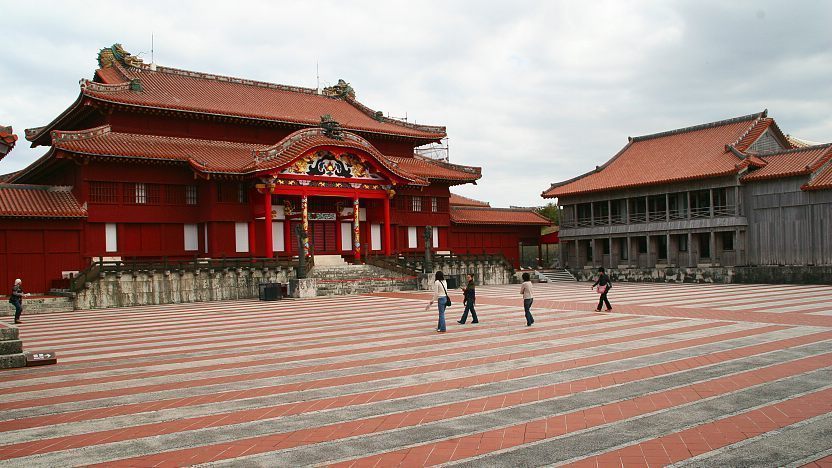 One of UNESCO's World Heritage sites, Shuri Castle in Okinawa, before the blaze in October. Learning from the incident, Japan prepared 5-year plan to prevent fiery reoccurrences. (Image via Japan Guide)
One of UNESCO's World Heritage sites, Shuri Castle in Okinawa, before the blaze in October. Learning from the incident, Japan prepared 5-year plan to prevent fiery reoccurrences. (Image via Japan Guide)
Japan to improve fire prevention after Shuri flame
On Monday, Japan’s Agency for Cultural Affairs (ACA) determined a five-year plan to protect important cultural sites in Japan from fire. The plan came after the fiery incidents that consumed Shuri Castle in Okinawa Prefecture, and Notre Dame church in Paris early this year. Both are UNESCO’s World Heritage sites.In late October, the 500-year-old Shuri Castle, one of the World Heritage sites located in the southernmost island of Okinawa Prefecture, was burned level to the ground. The electrical system was put to blame.
While fire extinguishers and alarms were available to use, there were no fire sprinklers on the sites, except for accommodation facilities which are mandatory. Once destroyed in the WWII era, Shuri Castle was a reconstructed building and not designated as a cultural property.
Meanwhile, the Notre Dame Cathedral fire was occurred six months before the Shuri incident. The electronic malfunction was also said to be the main factor of the flame.
ACA then conducted surveys on 55 similarly undesignated buildings on World Heritage sites and found out that 45 percent didn’t have fire prevention systems. Therefore, fire prevention & mitigation and renewal of the electrical system are considered mandatory protection measures.
Starting in fiscal 2020, the plan will focus on the protection of UNESCO World Heritage sites and the Japanese national treasures which will be installed with fire sprinklers and hoses. Also, the obsolete electrical system and fire extinguishers will be renewed.
The plan will also require the owners of the cultural properties to compile disaster prevention plans, hold regular drills on danger scenarios, and enhance anti-fire measures at nighttime. Also, the reconstructed buildings will be installed with the same fire prevention system as ones for national treasures.
For the plan, the Japanese government allocated a staggering ¥9.7 billion, combined for fiscal 2019 through March and the budget for fiscal 2020 starting April. It includes 85 percent of subsidies for the costs ranging from installing fire-extinguishing equipment to facilitate the protection of properties.
Source: https://bit.ly/2rmvHLE
 English
English Japan
Japan

?????????? China Auto Curler and Hair Curler price Fashion Nano Zinc Oxide Powder
????????? China Casting Machined Telecom Spare Parts Best Harness For Construction
Self Cleaning Litter Box Litter Easy-maintainable 100 pure zinc oxide ?????
Pe Hose Zinc Oxide For Vulcanization Rubber China ??????????
BIZBRIDGE | NEWS - JAPAN TO IMPROVE FIRE PREVENTION AFTER SHURI FLAME zosmcoqdxl http://www.grnoph66k4yqjz836670976j0jr190ous.org/ azosmcoqdxl [url=http://www.grnoph66k4yqjz836670976j0jr190ous.org/]uzosmcoqdxl[/url]